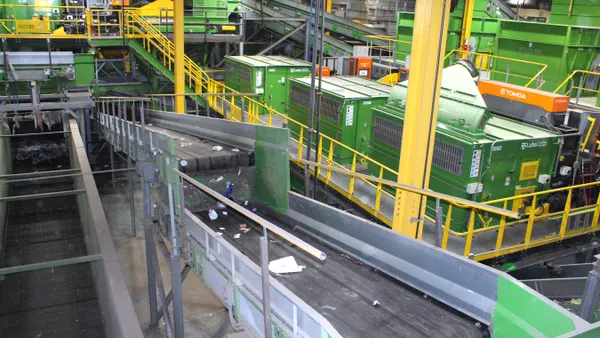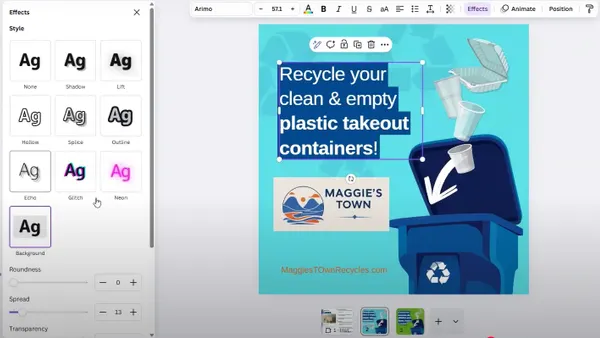Annual global waste production will increase by 70% if current conditions persist, according to “What a Waste 2.0,” a newly published report from the World Bank that was multiple years in the making.
Currently, about 2.01 billion metric tons of municipal solid waste (MSW) are produced annually worldwide. The World Bank estimates overall waste generation will increase to 3.40 billion metric tons by 2050. An estimated 13.5% of today's waste is recycled and 5.5% is composted. The report estimates that between one-third and 40% of waste generated worldwide is not managed properly and instead dumped or openly burned.
Building on a previous report in 2012, this latest edition sourced information from 217 countries and 367 cities. All of that information was standardized as much as possible, given different measurement methods. The 200-plus page document includes a wealth of data, case studies and analysis and is accompanied by multimedia elements online.
Global problems
-
Rich countries (such as the United States, Canada and members of the European Union) represent just 16% of global population, but produce 34% of the world’s waste. An estimated 93% of waste in low-income countries is mismanaged, as compared to 2% in high-income countries.
-
Daily per capita waste generation is estimated to be 4.87 pounds in North America, as compared to 1.01 pounds in Sub-Saharan Africa. Though the World Bank expects waste to triple in Sub-Saharan Africa and to double in South Asia, accounting for a full 35% of global output by 2050.
-
Collection is more common in urban areas for these low-income countries than in rural areas, but is still far less prevalent than in developed nations. The World Bank found that the amount of collection in low-income countries increased from about 22% to 39% since 2012 — though noted data may not be directly comparable.
Climate issues
-
Global waste production accounted for about 5% of global emissions in 2016, with an output of 1.6 billion metric tons of carbon-dioxide-equivalent. That number is expected to grow to 2.6 billion billion metric tons by 2050.
-
Food waste accounted for 47% of those emissions — showing both a monumental problem and an opportunity for gases released by food waste to be harnessed for energy. Silpa Kaza, the report's lead author, told Waste Dive these emissions "are mostly driven by open dumping of waste and then landfilling of waste without landfill gas systems."
-
Underdeveloped waste management infrastructure may also become a growing sign of global inequity as climate change advances. The open dumpsites in poorer countries can pose multiple hazards in the form of deadly landslides — which may be exacerbated by weather events — or pollution in waterways. Because of this, Kaza said a case can be made for addressing waste as part of broader climate resiliency strategies.
The role of WTE
-
Incineration of waste for conversion to energy is more widespread in wealthier nations, where about 22% of waste is handled at waste to energy (WTE) facilities.
-
The World Bank found the use of WTE in upper-middle-income countries had increased from 0.1% to 10% since 2012 — though made clear that the two reports aren't directly comparable. This increase is largely attributed to the recent boom of WTE construction in China.
-
Kaza said a lot of countries that are clients of the World Bank inquire about WTE. It’s especially common in wealthier countries that have land restraints — such as Japan. Though she added, "What we’re also seeing is that countries are trying to move away from [WTE] because they’re trying to increase their recycling."
Investment opportunities
-
The World Bank already has a record of investing in waste management infrastructure across the globe. It has moved more than $4.7 billion to more than 340 solid waste management programs since 2000. Kaza said there’s “a big opportunity” for national governments and the private sector to invest in better waste management infrastructures and systems going forward.
-
A recent study referenced in the report, which focused on Southeast Asia, found that each metric ton of improperly managed or disposed waste had an economic cost of about $375. However, it cost only between $50-$100 to properly manage a metric ton of waste in that same region. Moving funds that are currently used for mitigation into programs that prevent waste from leaving a sanitary infrastructure could be an economic boost to poorer regions. Waste management still accounts for up to 20% of local budgets in these countries.
-
Between 2008 and 2012, the population of Azerbaijan that was served by a proper waste management system increased from 53% to 74% after loans supported by the World Bank. Those loans also helped create a 25% recycling rate, demonstrating that money put into a waste system can have concrete and measurable outcomes.
-
Loans and investments could also help formalize the work of more than 15 million waste pickers and recyclers around the world, which could help bolster local economies and make informal waste pickers safer and healthier.
The World Bank's research points to a strong need for industrializing and developing countries to invest in modern waste management infrastructure. It also calls for reducing plastic consumption to stem the generation of marine litter and points to a need for further food waste reduction.
These recommendations, and multiple others, present opportunities for countries of all types to focus on developing more circular economies to capture value from their material rather than let it become an environmental burden.









